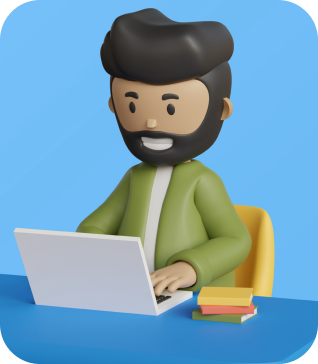Things to consider in your ‘return to the office’ plans
Kloudspot and Cisco Meraki create work experiences that connect teams and maximize productivity in a hybrid work world.
Partnering to bridge the gap
If the last two years taught us anything, it’s that we need to stay connected to thrive. Recently I chatted with Simon Tompson (Cisco Meraki) over Webex about how the way we work has changed. While the world seemed to stand still, technology has evolved. From the comfort of our home offices, we both agreed it was hard to contemplate going back to the office five days a week. And at the same time, we were looking forward to a hybrid work scenario to reconnect with peers, colleagues and friends. But we both had questions– would it be worth the commute? Would we be as productive in the office? Would we miss anything important if we skipped the office scene altogether?
Kloudspot and Cisco Meraki are tackling these challenges head on. The Meraki unboxed podcast has our full conversation detailing how. Here are some key takeaways on how we create work experiences that connect teams and maximize productivity in this new hybrid work world.
Different strokes for different folks
The office as we knew it is over. The pandemic made sure of that. But who’s sad? Scrambling to get to work on time and dreary commutes are part of the reason it’s called the grind. Most of us do not miss it at all.
But we’re human. Though the “pandemic model” was a relief at first, many of us started feeling the effects of isolation and missing the camaraderie and collaboration of office life.
The future of work is not all in the office or all at home, but a mix of both – a hybrid work model.

Onsite Omar
Prefers to be in the office most of the time because he likes face-to-face interaction with colleagues

Remote Rachel
Does her best work from home, away from distractions. Hates commuting, and believes remote working is better for her health and the environment.

Hybrid Harry
Likes working from home most days, but also likes breaking the monotony by going into the office on some days.
The New Normal
We can’t ignore the realities of our new normal and its impact on organizations, employees and society.
The “great resignation” is a true indication that a lot of people are voting with their feet for the flexibility and opportunity to choose what setting works best for them to achieve the lifestyle and work-life balance they want.
The future we want is one where everyone can get their best work done.
Is that too much to ask?
Lessons from the pandemic
One surprisingly positive outcome is that productivity rose by 5% in the US [ data from Working From Home research Nick Bloom] No surprises there, since commutes and distractions were killed. We gave much of this time back to work.
The down sides were that people were cut off from personal interactions – the ability to be collaborative in a creative way, have drop-in conversations with colleagues, and sustain culture.
Companies jumped in quickly to negate inequities in access to technology and the ability to communicate with each other. So employees got the devices and networks that delivered the information and connectivity they needed to do their jobs.
But tech could not really address the nuances of the human experience in office – the serendipitous meetings with people in the corridor, stopping by the boss’s office for a conversation, walking over to a colleague’s desk, or checking in with someone from another project to see how things were.
.
Mind the gap
Currently most people feel kind of blind. They literally have no view who’s in office and who’s working from home on any given day. Some companies are solving this by encouraging employees to come to office on specific days.
Also, when everyone was working from home and connecting over video, they all got an equal voice. Companies are now struggling to maintain a level playing field for those who are working remotely and to ensure that everyone feels included and has an equal voice
A Digital Workplace
Kloudspot bridges the gap between onsite and remote employees by focusing on the human experience of a network of workers.
The Kloudspot digital workplace cloud application comprises a corporate desktop or mobile web-based employee portal, underpinned by an analytics engine. You declare and share your presence as do your colleagues across the organization. And then you are presented with your desktop – important focus for the day, calendar, meetings, your work apps, and the circle of people you need to meet and work with. All within a virtual office experience. It feeds data business software and from wireless location capability technologies, Wi-Fi, Bluetooth, cameras and sensors to the analytics engine.
It then provides real data insights that enable a flexible work environment. Every employee is empowered to stay informed, engaged and connected in a hybrid world.
For example, answering the question: Is the trip to the office worth the commute? Knowing which colleagues, meetings, and onsite activities are in play on which days, makes the commute and added distraction a reasonable trade-off. Over time, the Kloudspot AI engine gets smarter when it comes to predictive capability. It starts using historic data to provide really interesting insights like which days of the week are better for interactions and connections with your first, and even second level connections in your people network connections.
By doing this Kloudspot helps companies navigate this new environment to optimize productivity, engagement, flexibility, culture, and the workspace itself.
Easy access

Start the day on the same page as your team and colleagues. Shared presence in Kloudspot, means in one view anyone can see where their team is working, onsite or remote, at an actual seat in a virtual campus.
Meaningful productivity
Better than arbitrary ‘days in the office’, the technology builds useful analytics around when employees will be most productive by going to the office versus staying at home.
Real connections
Remote employee, have a 360 degree view of the office. They can check in for the day at their own seat, see where their colleagues are, whether their boss is at her desk. When the time is right, kick off a friendly chat, or spontaneous business discussion, with integrated collaboration apps like Webex, Slack, Teams.
Smart spaces
Kloudspot helps with simple and complex space design and management decisions. Managers can block seats on behalf of their teams; Teams can choose their own days to come in to the office; HR and facilities have the insights they need to optimize and design spaces that make business sense.
Engaging culture
The future of the office is going to be much more human centric. Both collected data from surveys and inferred data from activities will help employers build a culture based on well-being, enabling employees to do their best work onsite and remote.
Human-first Technology
The office is not going anywhere, but the hybrid model seems here to stay. The need of the hour is new policies and technology to support it. It will be impossible to evolve hybrid offices without the help of smart technology like Kloudspot that can give insights about what’s really happening on the human network. Companies that implement true flexible working environments without discrimination on any grounds – location or technology – are going to build and retain the highest quality workforces. We’ve got more details on how to implement and evolve your hybrid work plans with Kloudspot.
We’ve got more details on how to implement and evolve your hybrid work plans with Kloudspot.
- Check out product demo videos in Guide to Hybrid Work
- Explore our Customer Case Studies
- Get started with a Free Trial
- And you can Contact Us anytime
